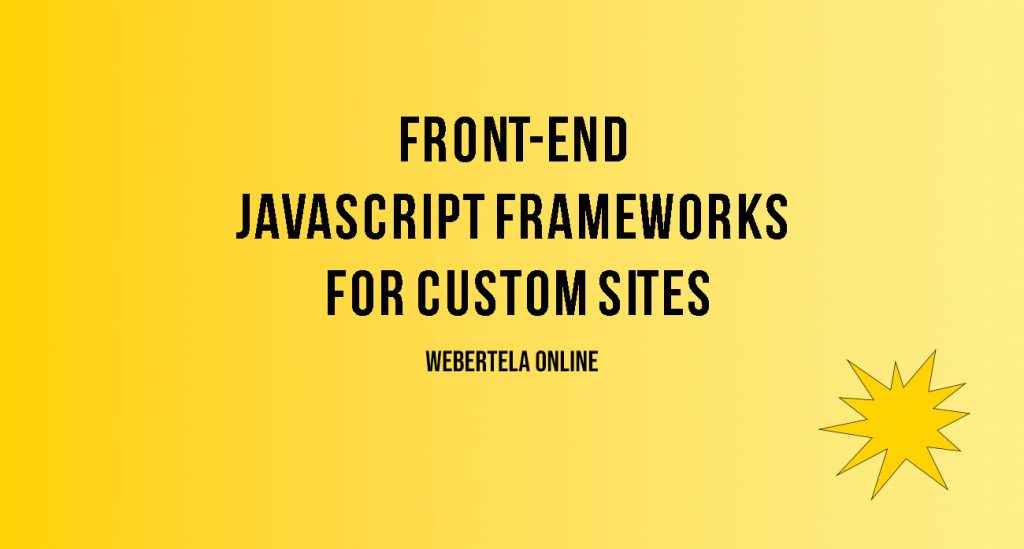Front-end JavaScript Frameworks for Custom Sites

As websites have evolved to become more complex applications, front-end development has grown increasingly challenging. JavaScript frameworks have emerged to help solve this problem by providing structure and best practices for building dynamic and interactive user interfaces directly in the browser.
In this article, we will explore some of the most popular front-end JavaScript frameworks and discuss when each may be a good fit for powering the front-end of a custom site. While each framework has its pros and cons depending on your specific needs and preferences, understanding the strengths of the major players can help guide your selection of the right tool.
React has quickly become one of the most commonly used frameworks, especially for large and complex applications. Its core value proposition is its component-based architecture which encourages building reusable UI components with well-defined inputs and behaviors.
React takes a declarative approach which makes code more predictable and easier to debug compared to imperative alternatives. Components cleanly encapsulate their logic and rendering, with data flow and updates handled through a virtual DOM for improved performance.
React is well-suited for sites that need to dynamically update and render portions of the UI independently, like dashboard pages with lots of changing data. However, React may be overkill for simpler static sites without complex interactivity.
Vue sits somewhere in between React and simpler frameworks by providing declarativeness with less complexity overall. It uses a similar component model to React but with simpler API and lighter overall footprint.
Some differences compared to React include optional use of JSX syntax, integrated routing handling via Vue Router, and simpler state management through Vuex. These differences make Vue more approachable for beginners yet still scale well for larger projects too.
As with React, Vue works well when you need components and dynamic rendering but don’t require the full power of a library like React. Vue’s reactivity system also makes it a good fit for dynamic data display heavy applications like dashboards or forums.
Angular takes a more rigid and fully-featured framework approach compared to React and Vue. Apps are built with modules, components, services and dependency injection.
While this structure imposes more overhead, it provides robust architectures for large scale apps. Strict typing via TypeScript also helps scale development of complex systems.
Angular’s strengths lie in enterprise-grade applications with deep logic layers. However, its opinions and boilerplate can be overkill for simpler static or component-driven sites. Better fits include data-heavy admin interfaces or full-fledged web apps.
Svelte takes a different approach by compiling your components down to pure JavaScript instead of running them in a virtual DOM. This results in exceptionally fast render speeds and small bundled code size.
The tradeoff is a slightly steeper learning curve and less robust ecosystem compared to options like Vue and React. Svelte is best suited for performance-critical interfaces like games, extensive reporting/analytics or media-heavy sites.
ItsCompile-time scheme makes bugs easier to catch early, and the lack of runtime code means your UI layer is very lean without a heavy framework underpinning. For the right use cases Svelte can be a superior option to traditional frameworks.
In Summary
Choosing the right front-end framework depends highly on your specific project needs and requirements. Larger teams or complex interfaces may benefit more from fully-featured options like React or Angular, while simpler sites could get by with more approachable options like Vue.
For performance-sensitive or static sites, Svelte stands out. No single framework is best in all cases – carefully considering factors like interactivity, size, community and learning curve will help you select the framework that fits your project goals.
Message me:
levan.andguladze@gmail.com
Sharing is caring!